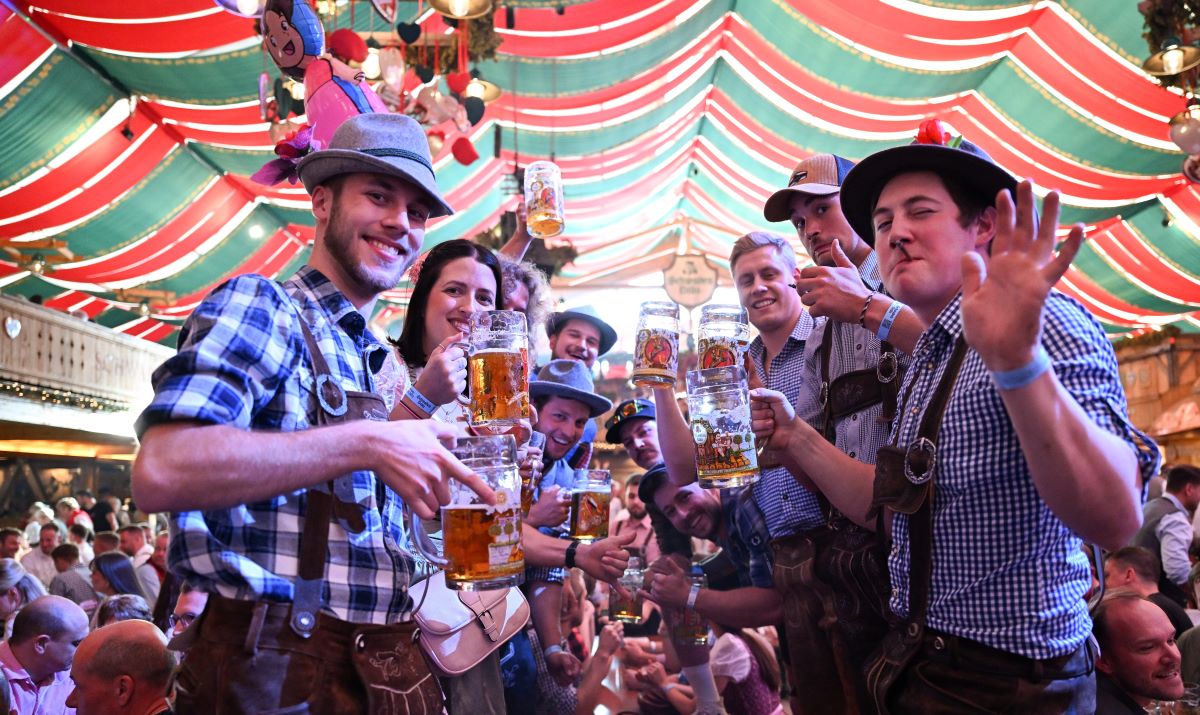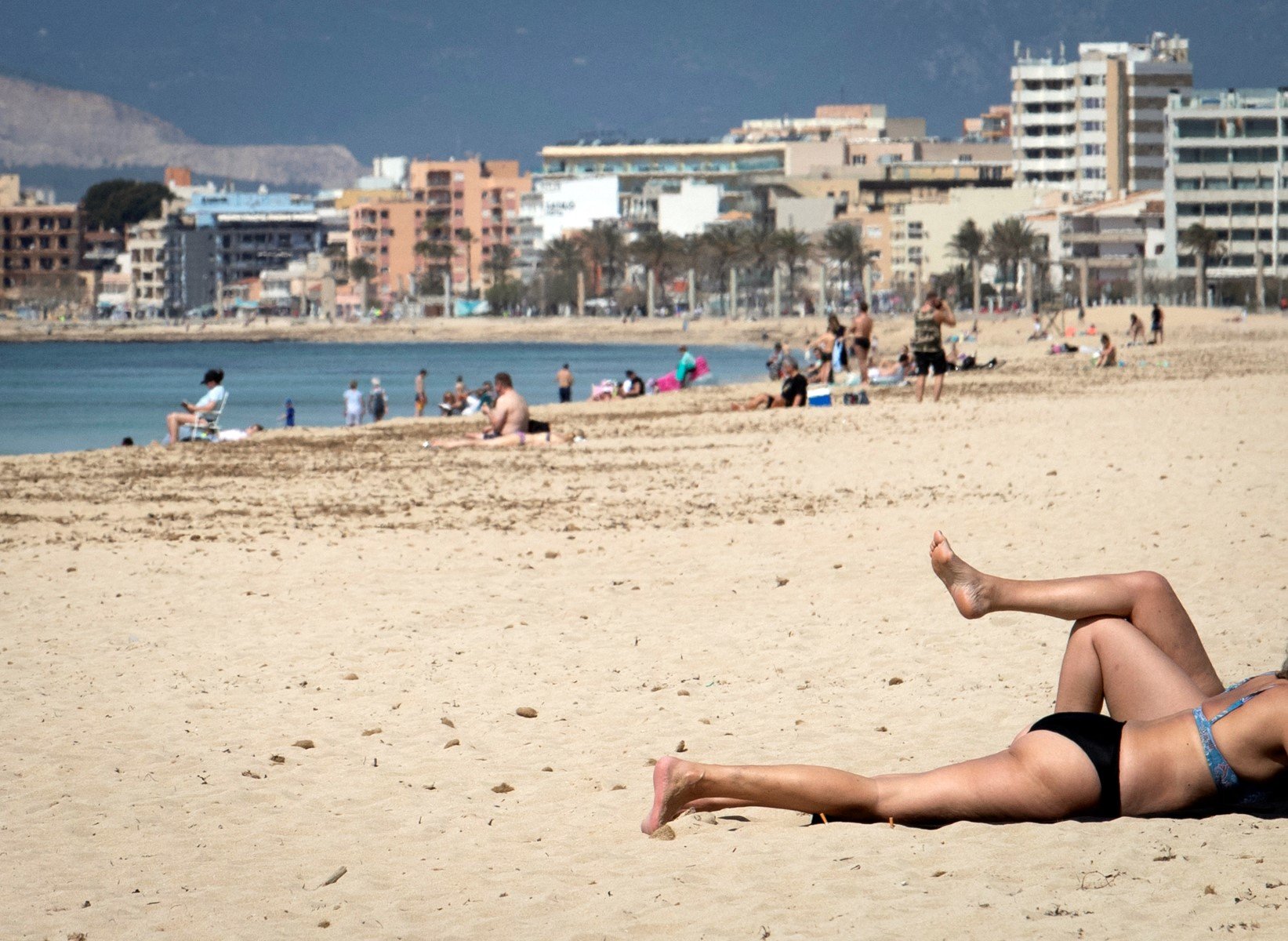Should you spend a week on the beach in ‘Malla’, or hike in the Alps with ‘all the gear and no idea’? We’ve unpacked the facts and figures behind the latest travel trends to help you ‘holiday like a German’ this year. And yes, that can be a good thing.
Around July each year millions of people around Germany start getting ready for their annual holiday.
According to the German Tourism Association (DRV), a record-breaking 56 million Germans took at least one holiday of five days or longer in 2024.
The average German took about 13 days for their main holiday in 2024, just edging past the previous year’s figures – and the spending is as impressive as the logistics: German holidaymakers shelled out €90 billion on travel last year, with the average longer holiday costing around €1,319 per person.
Despite growing flexibility, the most popular time to travel continues to be the traditional summer months of July, August and September, according to travel analysis by the Holiday and Travel Research Association (FUR).
Now that we’ve established when to go, how many millions of other people will be going at the same time, and how long to go for – it’s time to jump straight into our first lesson on how to holiday like a German.
Lesson one: Where to go

For domestic holidaymakers, Bavarian folk festivals provide a chance to revel in Germany’s rich beer culture. Photo: picture alliance/dpa | Bernd Weißbrod
Where does the average German go in search of holiday bliss?
For 36 percent of Germans, the answer is that there’s no place quite like home.
Among domestic holiday destinations, Bavaria is the most popular with German holidaymakers, followed by Mecklenburg-Vorpommern and Niedersachsen, according to Statista.
READ ALSO: Five of Germany’s busiest tourist attractions and where to go instead
For holidaymakers willing to leave the comforts of home (and car) behind, however, the top short-haul foreign destinations are Spain (hello Mallorca), Italy, and Turkey.
Advertisement
Spain remains unchallenged as the number one international destination, with German visitors making up the largest foreign tourist group on the Balearic Islands, according to the Mallorca Tourism Board.
A significant minority of German travellers (16.4 percent) felt the need to escape Europe altogether in 2024, with Southeast Asia being a particularly popular destination for long-haul trips.
LISTED: The new direct flights from Germany this summer
Shouldn’t I try to avoid very popular destinations?
It’s certainly worth thinking about. Studies show a so-called “Green Shift” is taking place in the German travel mind – on paper, anyway.
An ADAC survey from December 2024 found that 72 percent of Germans see overtourism as a real problem, and a majority express at least some concern over the impact of tourism on climate change. Almost 61 percent claim they have intentionally avoided destinations suffering from overtourism.
READ ALSO: Five cooler holiday destinations you can get to from Germany by train
It may be necessary to treat these findings with a pinch of salt, however. According to a recent QTA travel advisor poll, when it comes to actually booking their holiday, the vast majority of holidaymakers still make their decision based on the weather, the price, and reliable Wi-Fi.
Only eight percent of travel agents noted clients who had actually decided to change their travel plans on the basis of overtourism.
In order to holiday like a German, it doesn’t hurt to be self-aware and feel slightly guilty, but it’s still important to put practical considerations above principals when it comes to the crunch.
Lesson Two: Where to Stay?

A tourist couple sunbathes on Palma Beach in Palma de Mallorca. Photo: JAIME REINA/AFP.
Germans are renowned for their ability to plan ahead – maps printed, wet weather gear safely stowed, and emergency snacks on hand – and the idea of leaving things to the last minute is becoming harder and harder to bear.
According to the ADAC, 44 percent of people in the country booked their main vacation for 2024 at least four months in advance, compared to only 39 percent in 2022 and 35 percent in 2020.
Advertisement
Resort hotels remain popular, especially in traditional holiday hotspots (think Turkey’s Riviera or Mallorca’s Playa de Palma).
About half of the total travel market turnover in 2024 came from package tours and holidays offered by tour operators, with the other half made up of individually arranged trips, according to the German Travel Association.
Campsites and Airbnb-style options also saw increased demand in last year, especially among families and younger travellers.
READ ALSO: How to save money on a camping holiday in Germany
Lesson three: How to blend in
You might think that holidaying like a German should involve wearing socks with sandals and eagerly claiming a sun-lounger before dawn.
But in reality this couldn’t be further from the truth.
Advertisement
In fact, generally speaking Germans practice the art of blending into their surroundings on holiday.
According to the YouGov / Airbnb study, only 11 percent of Germans are willing to admit to ever wearing socks with their sandals, and only 16 percent own up to rising early to place their towel on a sun-lounger.
What’s more, over 50 percent of Germans are eager to sample regional dishes when they travel, with just 11 percent admitting they still want to eat Schnitzel and potato salad wherever they find themselves.
Sixty-four percent of German travellers say they make some effort to speak the local language, and 58 percent are “keen to see their destination through the eyes of locals.”
Perhaps most tellingly of all, 76 percent describe themselves as open to new experiences and cultures.
And yet strangely, despite all these efforts in the direction of cosmopolitanism, nearly three-quarters of respondents to the survey say they can still spot their compatriots on the beach with just a glance.
Follow our simple guide, and this year, maybe that could include you!
(Except for the headline, this story has not been edited by PostX News and is published from a syndicated feed.)

